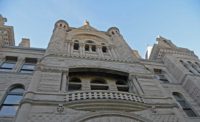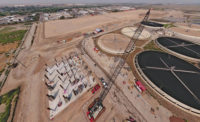The Salt Lake City School District is in the final stages of a $401-million seismic upgrade or replacement of all district facilities, with two projects to be completed this summer before the 24-year effort is finally done.

Of the 36 school buildings in the district, 22 were replaced and 16 were retrofitted to the point they could survive a 7.0 magnitude earthquake, says Larry Turner, assistant director of auxiliary services for the Salt Lake School District.
“We did a variety of things to stabilize buildings that needed it,” Turner says. “We put in new shear walls, new diaphragm connections. If there were footing and foundation issues, we would replace those or use piles and other things to stabilize the underpinnings.”
SLCD facilities are located on the Wasatch Front, home to most of the state’s population. It includes several major fault lines and areas designated as seismic zones 3 and 4, according to the U.S. Geological Survey. That means the area has moderate earthquake activity with the potential for quakes into the 7.0 range.
Turner says the work began in 1988 when district officials assembled a committee of engineers, concerned community members and other building professionals to survey all schools in the district and make recommendations. Initial work was intended to meet UBC codes, but in 2000, the group decided to build to IBC requirements.
Ron Reaveley—president emeritus of Salt Lake City-based Reaveley & Associates Engineers, who has consulted on the project from the beginning—says changes in technology and new understanding of how buildings perform in earthquakes drove the change from one code to the other.
Turner notes that many of the buildings replaced were not only seismically unstable and costly to retrofit but also no longer meeting the programming needs of educators.
Reaveley says the district had a wide range of buildings and soil types to surmount. Ground conditions in the Salt Lake Valley range from ancient lakebed (the remains of Lake Bonneville) to rocky foothills.
“There were quite a few older buildings that were mostly unreinforced masonry, and those do not perform well in an earthquake,” he says. “The soils under a building are important but getting the structure stabilized was the biggest issue we dealt with.”
Reaveley notes that in some cases masonry walls were coated with shotcrete, while other situations called for solutions like diagonal bracing.
The work was funded by two bond issues approved by voters. Turner says initial work was focused on the district’s three high schools because of their size and greater student population.
Reaveley says since the SLCD has led the way with seismic upgrades, other districts in the area are beginning to follow.



Post a comment to this article
Report Abusive Comment